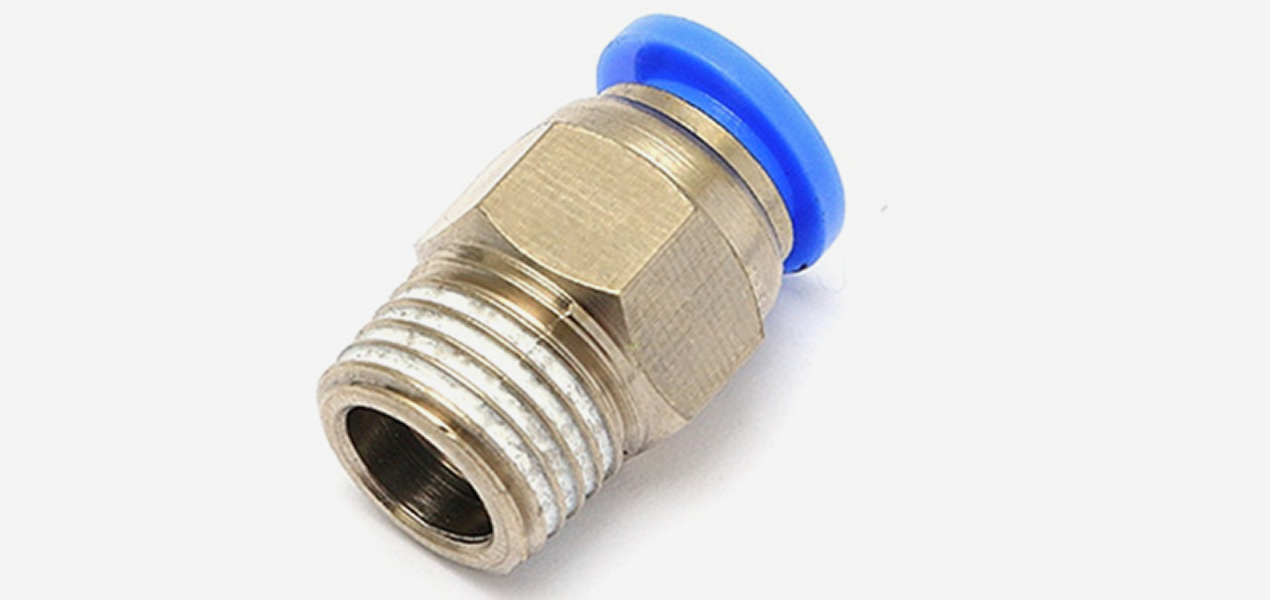Correct use of threaded quick-connect fittings
Home ✦
Latest News ✦
Correct use of threaded quick-connect fittings

Correct use of threaded quick-connect fittings
I believe everyone has heard of quick-connect fittings. They are very simple to use, so simple that no other auxiliary accessories are needed to connect or disconnect pipes. Do you know how to use this threaded fitting? The following editor will briefly introduce its correct use.
First of all, you need to choose the right model:
1. Select the model of quick-connect fittings according to the type of fluid and temperature. Since the type of fluid and temperature have a great influence on the actual use of the fittings, you should pay attention to the situation when selecting them.
2. Choose a straight-through quick-connect fitting based on fluid pressure. Different fluids produce different pressures when they flow, and the specific working pressure is related to the type of plastic pipe used.
3. The humidity, dust and corrosion resistance at the installation site have a great impact on the use of threaded quick-connect connectors . Therefore, the model needs to be determined based on the working conditions at the installation site.
Correct usage:
The installation of the quick-connect connector is very simple. You can loosen or tighten it by rotating it in the direction of the thread without using a nut.
During installation, it is necessary to distinguish the front end and the rear end. The rear end installation is mainly to connect the fluid pipe or to seal it, while the front end installation is mainly based on connecting pipe fittings.
After confirming that the connection is good, you can conduct water and air flow tests. Using this connection method instead of the traditional nut connection is not only efficient, but also more labor-saving.
When using threaded quick-connect fittings, you should ensure that the working pressure is within the rated pressure range, and the temperature and humidity of the working environment also need to be controlled within the use range. Do not deliberately damage the fittings, and do not disassemble or assemble them at will.
First of all, you need to choose the right model:
1. Select the model of quick-connect fittings according to the type of fluid and temperature. Since the type of fluid and temperature have a great influence on the actual use of the fittings, you should pay attention to the situation when selecting them.
2. Choose a straight-through quick-connect fitting based on fluid pressure. Different fluids produce different pressures when they flow, and the specific working pressure is related to the type of plastic pipe used.
3. The humidity, dust and corrosion resistance at the installation site have a great impact on the use of threaded quick-connect connectors . Therefore, the model needs to be determined based on the working conditions at the installation site.
Correct usage:
The installation of the quick-connect connector is very simple. You can loosen or tighten it by rotating it in the direction of the thread without using a nut.
During installation, it is necessary to distinguish the front end and the rear end. The rear end installation is mainly to connect the fluid pipe or to seal it, while the front end installation is mainly based on connecting pipe fittings.
After confirming that the connection is good, you can conduct water and air flow tests. Using this connection method instead of the traditional nut connection is not only efficient, but also more labor-saving.
When using threaded quick-connect fittings, you should ensure that the working pressure is within the rated pressure range, and the temperature and humidity of the working environment also need to be controlled within the use range. Do not deliberately damage the fittings, and do not disassemble or assemble them at will.



